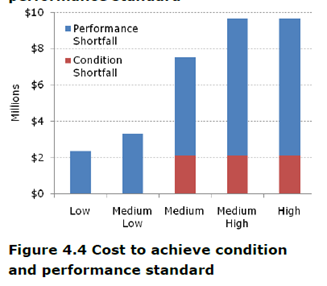Performance standards: planning beyond condition
Inspecting the condition and structural integrity of a building is only part of the assessment process. Where identifying components in a poorer condition may result in a programme of works that fixes defects and replaces or renews components, this is often only a small proportion of the overall works that could be needed to bring a building up to standard.
It’s relatively easy to assess the condition of components that make up a building – but it can be significantly more challenging (and expensive) to assess the compliance, function, or overall performance of a building. With a condition survey determining what’s needed to maintain the building to make it last longer, a performance survey will ask the harder questions such as whether the building complies with the building codes or whether the layout of the building is still of value to its tenants, the community, or your customers.
How to plan for performance
SPM Assets helps asset managers plan for performance in a systematic way. We’ve written material into industry guidance manuals, and have also built the Property Quality Standards (PQS) module into the SPM Assets software and maintain the associated library of performance standards.
The key to planning beyond condition is to understand the importance of other criteria that define the standard you need your buildings to be at: this is the “customer and technical levels of service standards” as defined in the IPWEA NAMS guidance material. And this needs to be considered as part of your asset information management strategy where you collect, maintain and improve information over time.
Performance planning example
To provide an example of the importance of this ‘planning beyond condition’ approach, one of our Local Government customers assessed 125 of their buildings. The approach was to inspect the condition of the components, which resulted in a $2 million renewal and replacement cost. This was significantly lower than thought – and after a joint audit on-site, we concluded that the primary need was functional and environmental improvements.
The chart below shows the results for different levels of service standards. Where it would have been ideal to address all condition and performance shortfalls, the Council decided on the Medium standard where only the more critical performance issues were addressed. The resulting planned projects brought together both the condition and performance shortfalls for each of the 125 buildings: these projects were then prioritised based on the significance of the performance standard, the relative importance of the building and the criticality of the components assessed.

Coming soon: a presentation on performance planning
Russell Caird, Business Development Manager of SPM Assets Australia, will be presenting a paper on performance planning using a recent example of Wollongong City Council at the Institute of Public Works Conference (Australia and New Zealand) in Hobart on 27 August. We will be sharing the presentation in our August Broadcast.
Subscribe to our Broadcast
Our monthly newsletter featuring asset management tips and insights, and the latest SPM Assets news.
